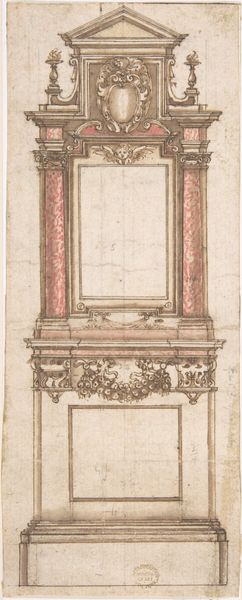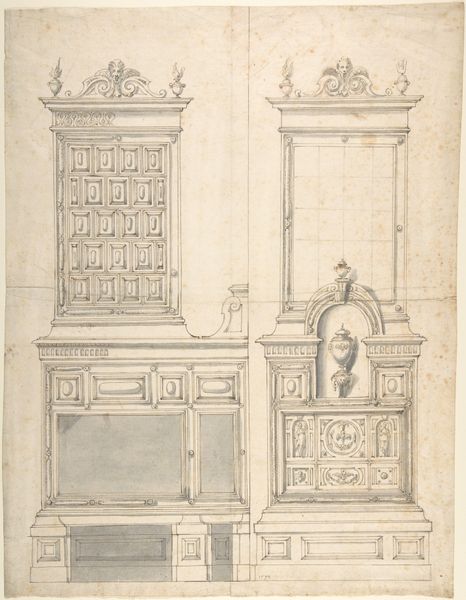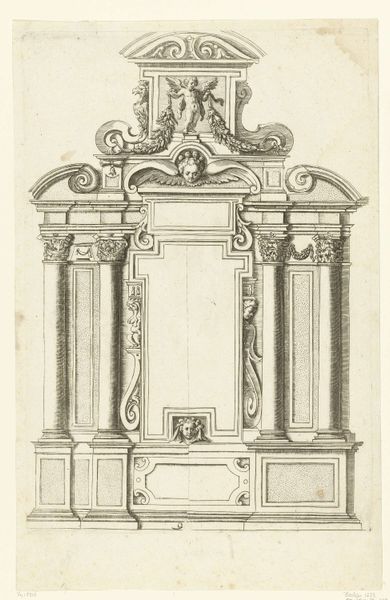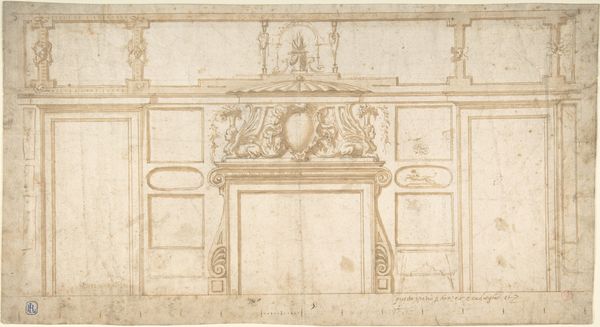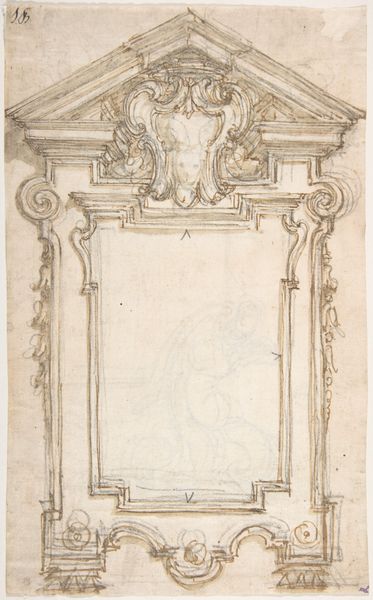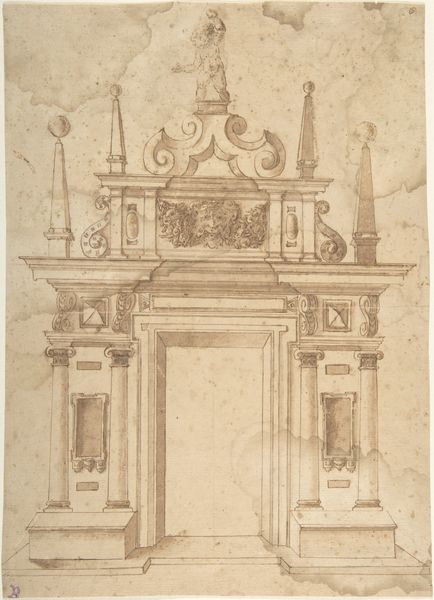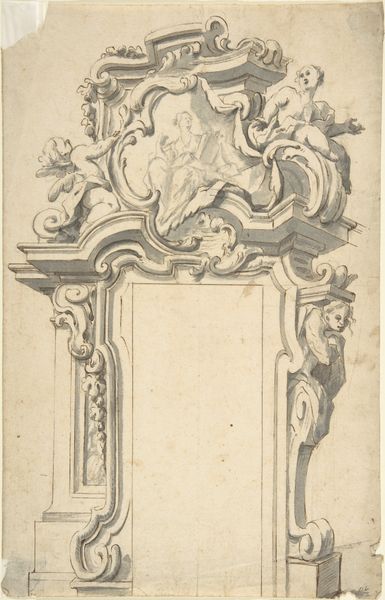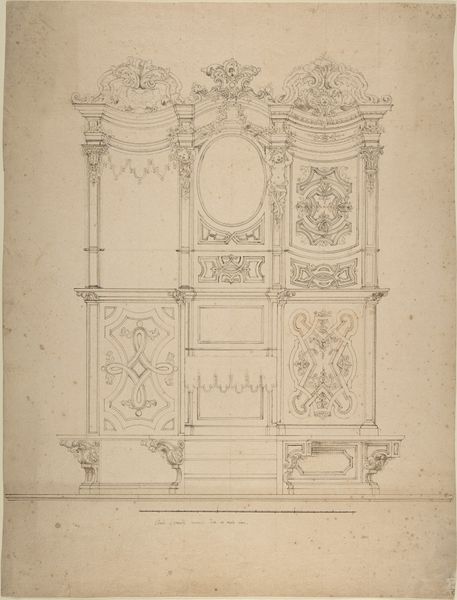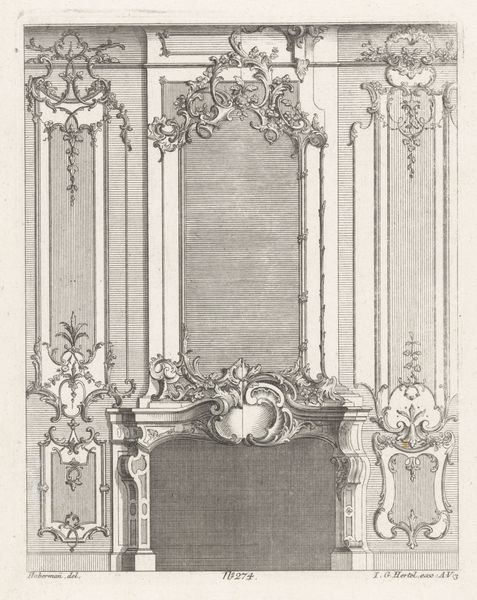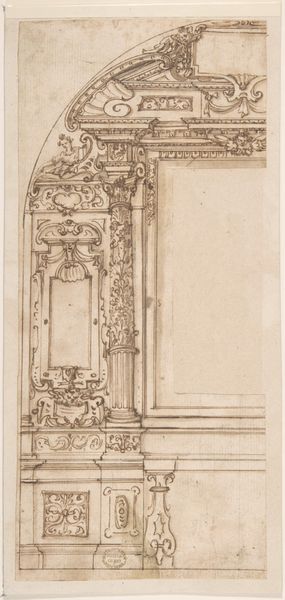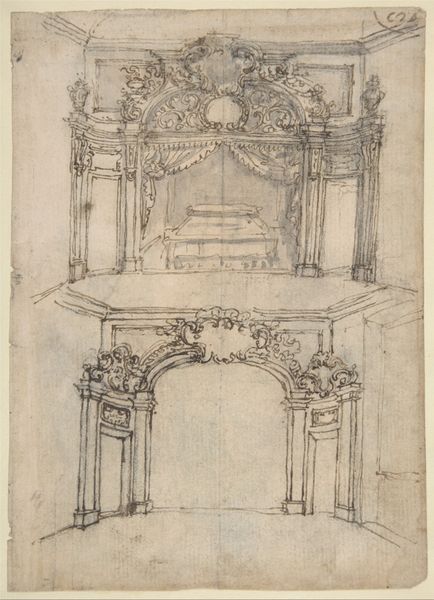
drawing, print, watercolor, architecture
#
drawing
#
baroque
# print
#
form
#
watercolor
#
line
#
italian-renaissance
#
watercolor
#
architecture
#
realism
Dimensions: 14-11/16 x 9-1/8 in. (37.3 x 23.1 cm)
Copyright: Public Domain
Editor: So, this is "Drawing for a Wall-Decoration," created sometime between 1700 and 1800 by an anonymous artist. It looks like watercolor and ink on paper, housed here at the Met. It reminds me of an architectural blueprint. How should we understand it? Curator: Well, considering its likely use as a preparatory drawing, we should focus on the material conditions of its production. Think about the availability of paper, pigments, and the skills required to draft architectural designs at that time. What social class do you think the artist and their client were a part of? Editor: Probably wealthy? The design seems quite ornate and wouldn't be affordable for the common person. Curator: Exactly. This drawing represents not just a design, but a complex network of resources, labor, and patronage. Notice the details – the columns, the scrolling ornamentation. How might the creation of such an elaborate wall decoration impact local craftsmen? Editor: It probably employed a lot of stonemasons, carvers... craftspeople who had specialized skills in baroque design. And maybe even dictated the training that would be available to these craftsmen! Curator: Precisely! We need to consider the division of labor inherent in realizing such a design. A patron commissions the drawing, the artist designs, and skilled laborers execute. Can you think of other examples in our own time? Editor: This reminds me a little bit about fast-fashion. We admire clothes that were designed by experts but sometimes fail to consider the factories and garment workers involved in making those garments! It gives me a different perspective. Curator: It's not just aesthetics then; it's about revealing the power dynamics embedded within the art’s production. Something to think about.
Comments
No comments
Be the first to comment and join the conversation on the ultimate creative platform.
